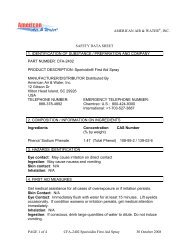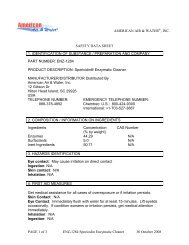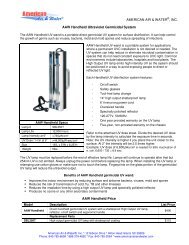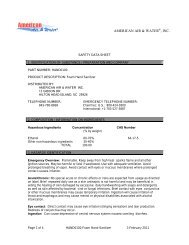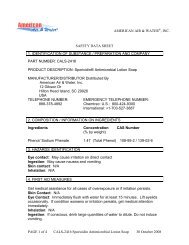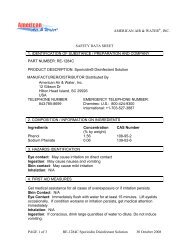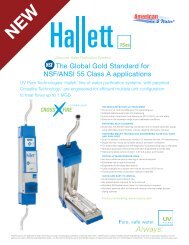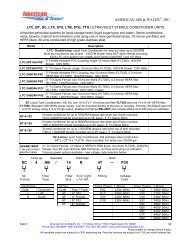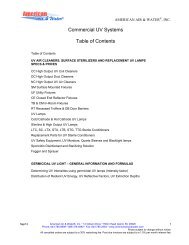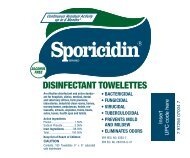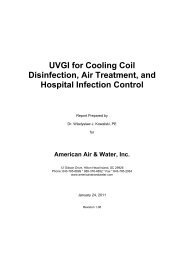Using Ultraviolet Radiation and Ventilation to Control Tuberculosis
Using Ultraviolet Radiation and Ventilation to Control Tuberculosis
Using Ultraviolet Radiation and Ventilation to Control Tuberculosis
Create successful ePaper yourself
Turn your PDF publications into a flip-book with our unique Google optimized e-Paper software.
III. ULTRAVIOLET RADIATION<br />
The concentrations of contaminants in a room can be controlled with mechanical ventilation<br />
in two ways. The first is called local exhaust ventilation. The second is referred <strong>to</strong> as<br />
dilution ventilation. These methods are described below.<br />
Local Exhaust <strong>Ventilation</strong><br />
A local exhaust ventilation system removes airborne contaminants at or near<br />
their sources <strong>and</strong> can contain infectious aerosols very effectively. An example would be the<br />
safety hoods that labora<strong>to</strong>ry workers use when h<strong>and</strong>ling specimens. Similar enclosures<br />
often are used for aerosol-generating activities such as sputum collection <strong>and</strong> aerosol<br />
therapy. Detailed information on the design of local exhaust systems is available in<br />
Industrial <strong>Ventilation</strong>. A Manual of Recommended Practice (10).<br />
The major components of a local exhaust ventilation system are: 1) the hood or enclosure, 2)<br />
the ductwork through which the air moves, 3) an air cleaner, <strong>and</strong> 4) the fan (see Figure 5).<br />
An air cleaner, such as a high-efficiency air filter, a UV lamp, or an air incinera<strong>to</strong>r, is<br />
needed when the contaminated air cannot be exhausted safely or is recirculated <strong>to</strong> a room.<br />
15



